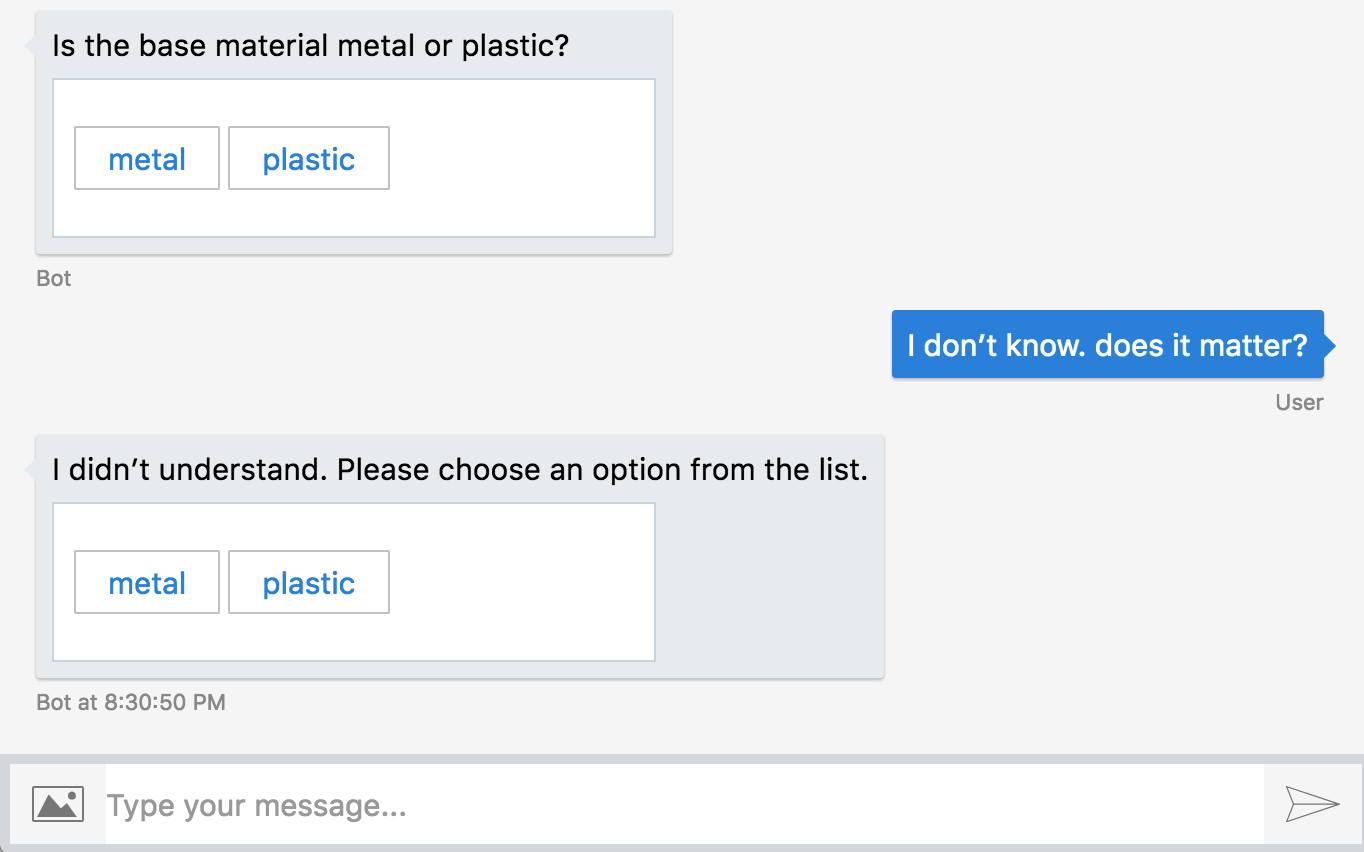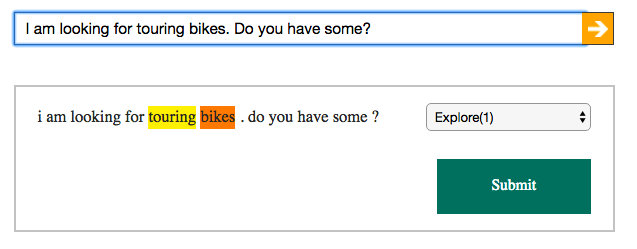Smarter Conversations. Part 3 - Breadcrumbs
This post continues the smarter conversations series and today I would like to show you how to keep track of the conversation flow and help your bot remember and reason about it. Previously, in part 1, I showed how to add sentiment detection to your bot and in part 2 I explored ways to keep your dialogs more open.
Breadcrumbs
In part 1 I used the following dialog to illustrate why you might want to be able to detect expressed sentiment:
User >> I’m looking for screws used for printer assembly Bot >> Sure, I’m happy to help you. Bot >> Is the base material metal or plastic? User >> metal Bot >> [lists a few recommendations] Bot >> [mentions screws that can form their own threads] User >> Great! I think that's what I need Bot >> [recommends more information and an installation video]
The highlighted phrase is not an expression of a new intent, not an answer to the bot’s prompt. It’s a positive emotional reaction to the perfectly timed recommendation about thread forming screws. We were able to capture it and present to our bot as an intent:
1 | bot.dialog('affirmation', [ |
Unlike other intents, however, the Affirmation intent can’t be fulfilled without knowing what came before it. Wouldn’t it be great if the bot had access to the conversation’s breadcrumbs? If it could reason about what was talked about before?
History Engine
While the bot framework doesn’t keep the history of triggered intents and actions beyond the active dialog stack, it’s not hard to build a simple history engine that would take care of it.
Probably the easiest way to do it is via the onSelectRoute hook:
1 | // ... |
The route.routeData.action is the name of the dialog that is about to be triggered. Here’s how your bot would use it:
1 | const affirmations = { |
It’s important to note that if you are using the
IntentDialog, you won’t seeonSelectRoutetriggered for yourintent.matches(). This is because the matching is handled by the dialog, not the routing system. I stopped using theIntentDialogbound to/in favor or recently added global recognizers and triggers and will soon upgrade my ecommerce bot.
Relaxed Prompt
I wanted to share one more technique that I recently discovered and started using a lot to keep my prompts more open, more relaxed.
In the product selection dialog, for example, you may find yourself giving your user a set of options to choose from and also an option to forego the selection:
...
Bot >> Would you like to look at one particular brand?
Bot >> [lists a few brand choices as buttons]
User >> No, thank you
The answer no, thank you is not one of the brand options and I wouldn’t render it as such either. I would like the bot to accept one of the options given and consider everything else not picked up by any other recognizer as a no, thank you answer.
All we need to do, apparently, is to make sure the bot doesn’t reprompt if it receives a wrong answer and is ready for an alternative response:
1 | bot.dialog('brands', [ |
That’s it for today. Next time I will show you how to keep a full history of a conversation and be ready to send a transcript to the customer support agent when the bot gets stuck.


